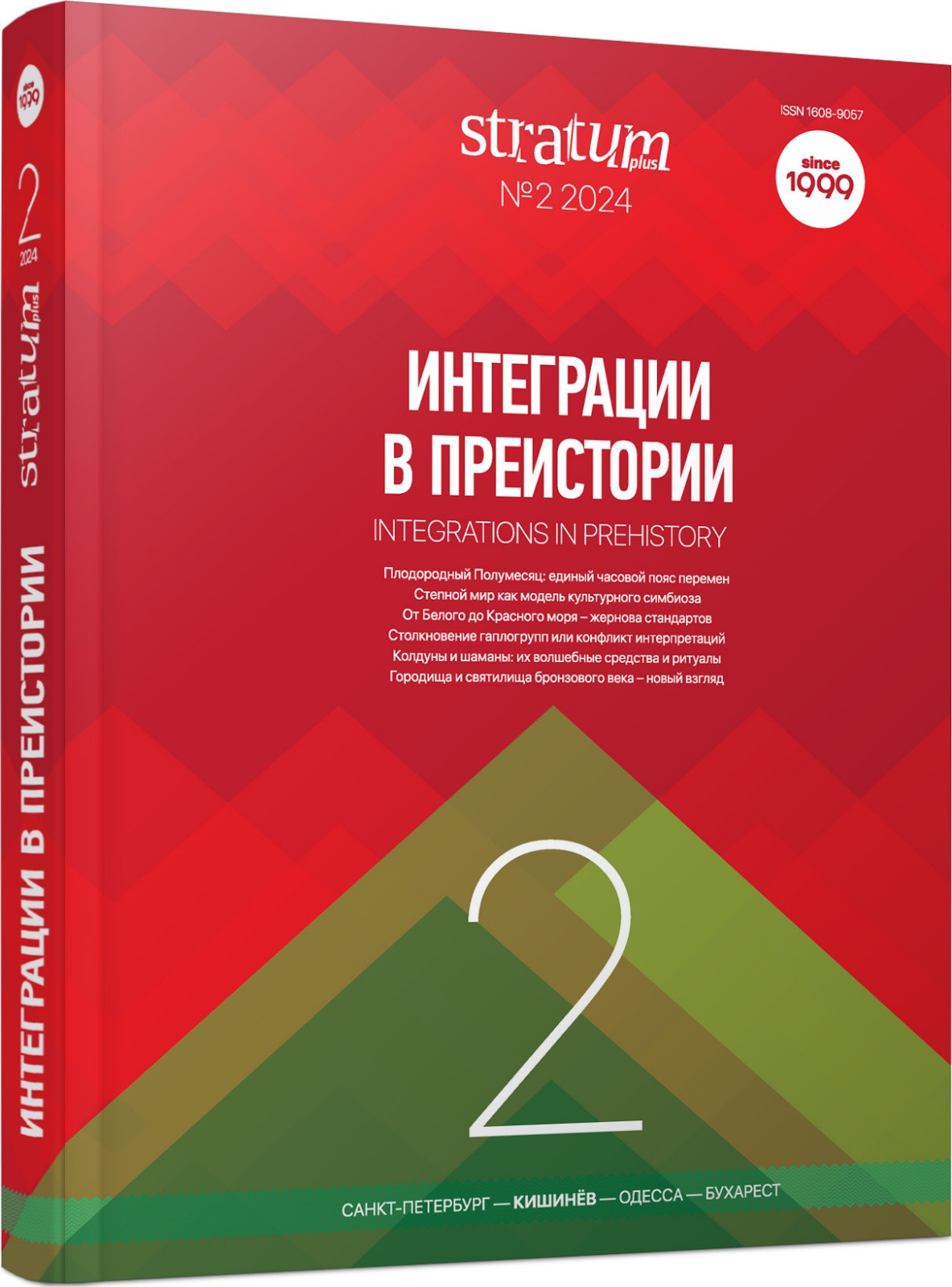Типология орнаментов на изделиях из кости и рога поселения Маяк 2 (Мурманская область, Россия)
Typology of Ornaments on Bone and Antler Items Found on Mayak 2 Settlement (Murmansk, Russia)
Author(s): Anton I. MurashkinSubject(s): History, Archaeology, History of Art, Prehistory
Published by: Издательский дом Stratum, Университет «Высшая антропологическая школа»
Keywords: Northern Fennoscandia; Neolithic; Bronze Age; bone and antler artefacts; ornamentation; typology; periodization; chronology
Summary/Abstract: The Neolithic and Bronze Age settlement of Mayak 2 on the northern coast of the Barents Sea was excavated by N. N. Gurina in 1979—1984 on an area of more than 1000 square metres. The unique collection of artefacts made of animal bones, antlers and teeth was obtained. 61 of them were decorated with carved ornaments (73 decorated surfaces in total). The collection of decorated objects consists of tools, personal ornaments, everyday objects, preforms, fragments of artefacts and unworked fragments of bones and antlers. “Simple” ornamental motifs include rows of notches/incisions, groups of parallel lines, rows of diamonds, “fishing net”, and chevron-like patterns. Two groups of “complex” compositions belonging to different traditions have been distinguished. The first one is characterised by the ornamental field that is filled entirely. It includes motifs of nested chevrons, inscribed polygons, “arched” (“honeycomb”), “parquet” (“patchwork quilt”). Objects decorated in this tradition were found in semi-closed complexes same as Gressbakken houses and middens that spread along the coast of northern Norway and the Murmansk region during the Late Neolithic (2600—1600 calBC). The second tradition includes a single onlay decorated with a multi-linear stepped motif, which is represented on objects from the burials of the Kola Oleneostrovsky burial ground. A characteristic feature of such decoration is the formation of longitudinal or transverse friezes on the decorated object. According to the dates of the burial ground (1500—1100 calBC), the second ornamental tradition belongs to the Bronze Age.
Journal: Stratum plus. Археология и культурная антропология
- Issue Year: 2024
- Issue No: 2
- Page Range: 205-219
- Page Count: 15
- Language: Russian
- Content File-PDF

